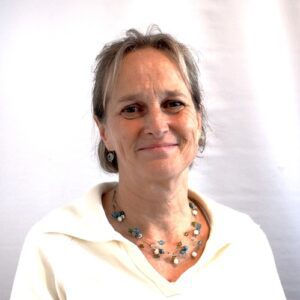The Safety Culture Ladder (SCL) has its roots in the rail industry, and the thinking from there has increasingly seeped into adjacent sectors such as construction. Now, however, Wageningen Food Safety Research (WFSR), part of Wageningen University & Research (WUR), has also started rolling out the SCL2.0.
Business Unit Manager Microbiology & Agrochains Marlou van Iersel is on the MT of WFSR. After a recent merger, it was time to review certain aspects of the

operations critically. "Safety is one of them. We asked ourselves what level of safety we actually want. That is not to say, by the way, that safety is not in good order at our company. We are doing fine, but we would like to dot the 'i'.
Paper versus practice
Also according to Greetje Meijer, health and safety and environment coordinator, WFSR generally has everything in order when it comes to health and safety. She, too, reflected on WFSR's safety culture. 'As a research institution where a lot of work is done in laboratories, we already have a lot of things in place regarding health and safety. But there is always room for improvement. We also have 'occupational blindness' and sometimes the focus on information, instruction or supervision could be better. We want everyone to work safely and healthily and to communicate this: addressing each other about undesirable behaviour, but also complimenting each other when things go well.
Why SCL2.0
Meijer was instrumental in the final decision to work with the SCL2.0. 'I compared different methods to investigate safety culture,' she says. 'We chose the SCL2.0 because it is a Dutch, standardised certification method indicated by the Ministry of SZW as a safety culture assessment method. The method has just been updated, making it applicable to any type of company within all sectors. And very importantly, the SCL2.0 can be used for self-assessment. The accompanying web tool to administer the questionnaires also proved useful. The tool provides participant and questionnaires. Results have filter options and are clearly displayed, allowing results to be examined at organisational level, for instance. In addition, it is possible to perform a GAP analysis in the tool, allowing an action plan to be drawn up for the points on which the organisation scores less well. The SCL2.0 standard is a tool to determine where the organisation can improve. All this was the deciding factor in using the SCL2.0 for the baseline measurement.'
Results
The questionnaires revealed what Meijer had expected. 'We had estimated in advance that we would be between rung two and three and that turned out to be the case. Our ambition level is level three and we will now draw up an action plan for that.'
Challenges
Meijer explains that not all questionnaires were returned completed. 'Participants had problems with the questions because they were not unambiguous. A question sometimes consisted of more questions and the answers too sometimes consisted of more answers. So it would be good to make the questions and answers more unambiguous. In our case, it would probably have positively affected the response rates.'
70% rule
 WFSR made a change in determining the step on the SCL2.0 based on the scoring percentages. 'In the tool, if the scoring percentages for different steps are equal, the organisation lands on the highest step as a result. For example, if 15 per cent of the respondents score for step one, 25 per cent for step two, 30 per cent for step three and 30 per cent for step four, step four is given as the result. But that means the majority of the organisation has a different opinion. To ensure that the step for which there is strong support and recognition is chosen, we have chosen as the result the step for which at least seventy per cent of the respondents chose. This is the sum of percentages added up from the highest step. In the example, this would mean that step two is the set result. This approach ultimately resulted in WFSR scoring lower on the SCL2.0 than if the Web tool approach had been followed. We still chose to follow this proprietary approach because we believe it gives a better picture of the current safety culture.' And there is something else. 'We also looked at how to compare the differences in safety culture between organisational layers and different groups within WFSR. This did not look at the difference in steps but at the sum of the percentage of respondents who chose step one and step two (T1+T2). The higher this percentage, the lower the safety culture. This sum percentage proved more discriminating than the difference in steps on the SCL2.0.'
WFSR made a change in determining the step on the SCL2.0 based on the scoring percentages. 'In the tool, if the scoring percentages for different steps are equal, the organisation lands on the highest step as a result. For example, if 15 per cent of the respondents score for step one, 25 per cent for step two, 30 per cent for step three and 30 per cent for step four, step four is given as the result. But that means the majority of the organisation has a different opinion. To ensure that the step for which there is strong support and recognition is chosen, we have chosen as the result the step for which at least seventy per cent of the respondents chose. This is the sum of percentages added up from the highest step. In the example, this would mean that step two is the set result. This approach ultimately resulted in WFSR scoring lower on the SCL2.0 than if the Web tool approach had been followed. We still chose to follow this proprietary approach because we believe it gives a better picture of the current safety culture.' And there is something else. 'We also looked at how to compare the differences in safety culture between organisational layers and different groups within WFSR. This did not look at the difference in steps but at the sum of the percentage of respondents who chose step one and step two (T1+T2). The higher this percentage, the lower the safety culture. This sum percentage proved more discriminating than the difference in steps on the SCL2.0.'
Old and young
Van Iersel also mentions that the ideas of the SCL2.0 have a harder time catching on with employees who already have a long tenure within WFSR. 'That group has been doing the work in the same way for decades. It is harder for them to undergo that mental change that is needed. With new employees who have not been in the profession for so long, it is a lot easier, because they still have the latest technology fresh in their minds through their training.'
Insights
WFSR knows from conducting the SCL2.0 where extra attention needs to be paid. Meijer: 'Giving substance to desired behaviour is one such example. As is the role of leadership in safe and healthy working. The SCL2.0 makes it possible to look objectively at how we can strengthen the safety culture within the institute. Not only in word, but also in deed. The dot on the horizon where we want to go is set, so everyone can work (even better) healthily and safely.' Van Iersel stresses the importance of management in successfully rolling out the plan of action to strengthen the safety culture. 'If it is not (implemented) by management, the rest of the organisation will also find it difficult to embrace it. Management has to set the right example. We therefore meet regularly with the team leaders and the MT to keep bringing safe and healthy working to the attention of everyone and to attach and follow up on concrete action points.'
Future
And the next steps? 'Based on the results, we will draw up an action plan to strengthen the safety culture. We will tackle the themes in which we still score too low for level three. Based on this plan, management and immediate supervisors will work with their teams to make annual plans. That way, the whole organisation will be involved in the change process. It is also important that the changes are embedded in the organisation and that safe and healthy working is sustainably embedded in the organisation'.